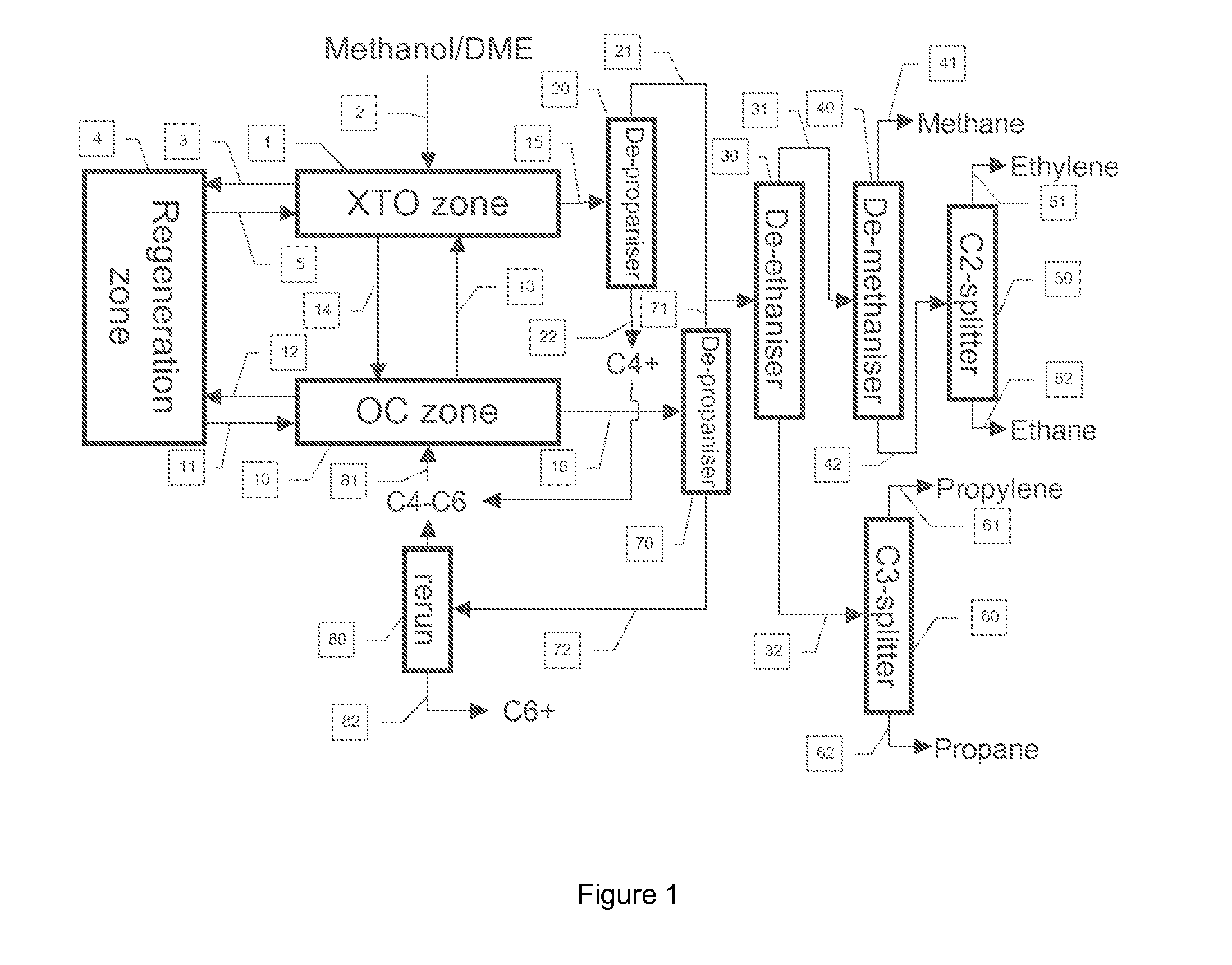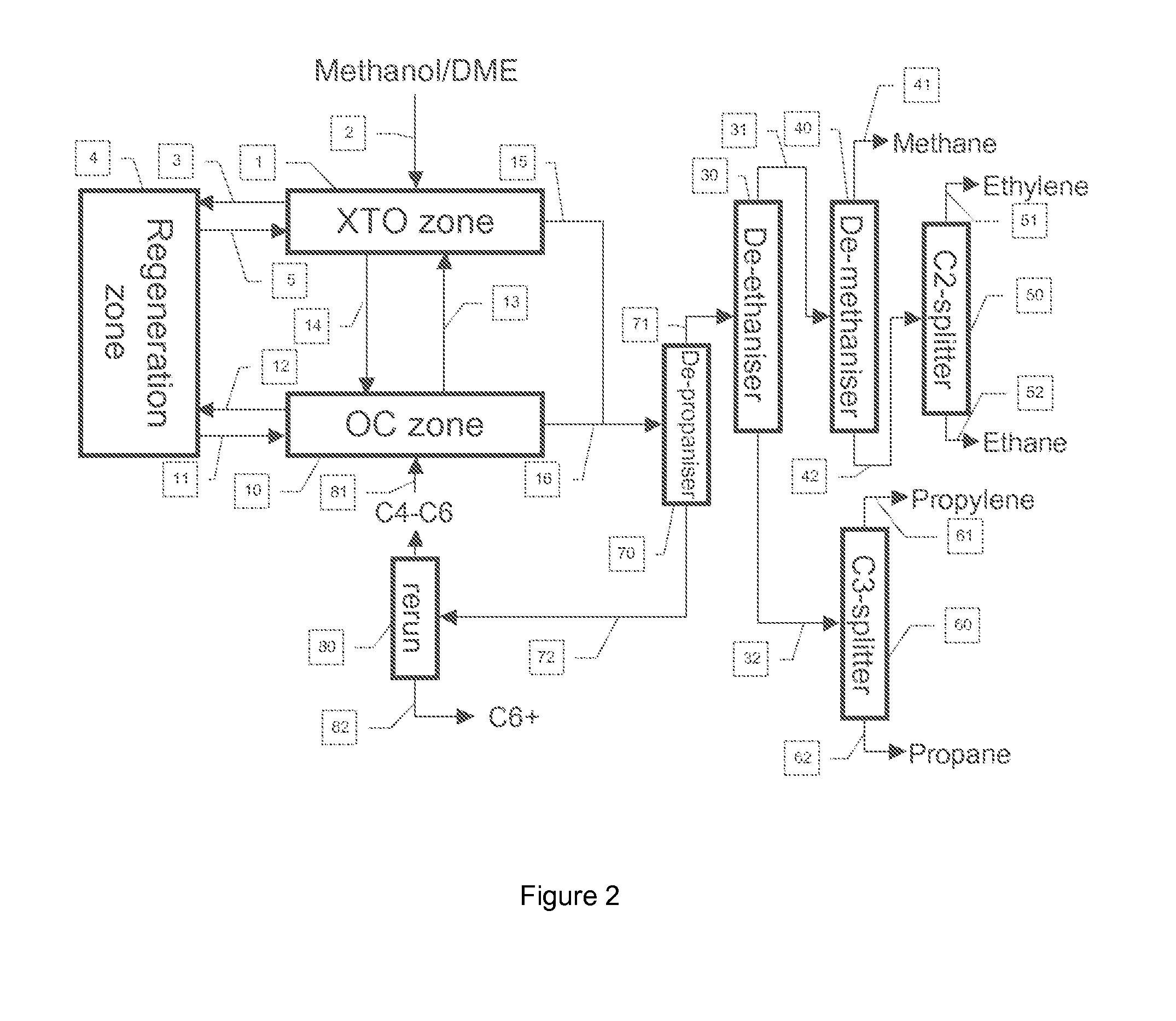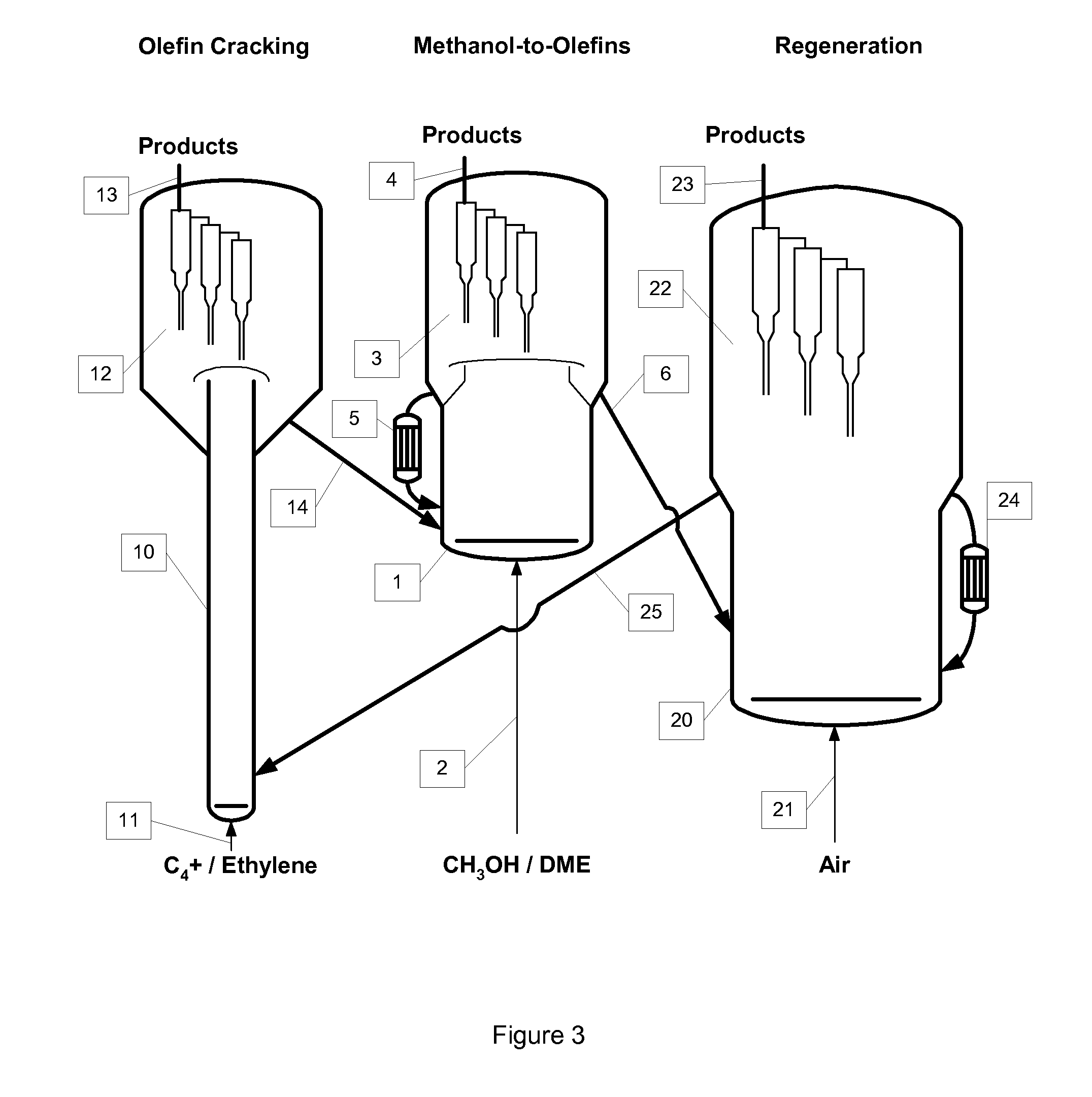Process to Make Olefins from Oxygenates
a technology of oxygenate and olefin, which is applied in the direction of catalyst regeneration/reactivation, hydrocarbon oil treatment products, physical/chemical process catalysts, etc., to achieve the effect of high catalyst circulation rate, strong endothermic reaction, and high conversion rate of feedstock
- Summary
- Abstract
- Description
- Claims
- Application Information
AI Technical Summary
Benefits of technology
Problems solved by technology
Method used
Image
Examples
example 1
[0116]A sample of zeolite ZSM-5 (Si / Al=13) in H-form synthesized without template was steamed at 550° C. for 6 h. Steamed solid was subjected to a contact with 3.14M solution of H3PO4 for 4 h under reflux condition (4.2 ml / 1 g pf zeolite). Then the solid was separated from the liquid phase at room temperature by filtering from the solution. Obtained material was dried at 200° C. for 16 h. 10 g of the dried sample was subjected to a contact with 42 ml of water and 0.7 g of xonotlite (silicate of calcium) under stirring at room temperature for 1 h. Then 30 g of low sodium silica sol (2034DI Bindzil) and 2 g of kaolin were added to the solution. The resulted mixture was kept under stirring for one hour more at room temperature and dried. The dried powder was calcined at 700° C. for 2 h. The sample is hereinafter identified as sample A.
example 2
(OC)
[0117]Catalyst tests were performed on sample A on 10 ml (6.3 g) of catalyst grains (35-45 meshes) loaded in a tubular reactor with internal diameter 11 mm. The feedstock which contains substantially non cyclic olefins C4 (62%) was subjected to catalytic cracking in the presence of catalyst in a fixed bed reactor at 575° C., WHSV=6.7 h−1, P=1.5 bara.
[0118]The results of the average catalyst performance during the first 3 h are in table 1 hereunder. The values in table 1 are in weight percents on carbon basis.
[0119]Then the catalyst was cooled down under N2 flow (5 Nl / h), unloaded and analysed for a carbon content by CHN method. The catalyst contained 0.2 wt % of carbon.
[0120]The unloaded spent sample of the catalyst containing 0.2 wt % of carbon is hereinafter identified as sample B (primarily used in OC reaction).
TABLE 1FeedEffluentC1 (Methane)0.00.3C2− (Ethylene)0.03.3C3 (Propane0.11.1C3− (Propylene)0.217.9C4 paraffin's33.934.4C4 olefins60.425.8C5+5.342.1Aromatics0.00.9Paraffi...
example 3
(MTO Reaction)
[0121]Catalyst tests were performed on 2 g (35-45 mesh particles) of catalyst with an essentially pure methanol feed, at 550° C. and at a pressure of 0.5 barg and WHSV=1.6 h−1, in a fixed-bed, down flow stainless-steel reactor. Prior to catalytic run all catalysts were heated in flowing N2 (5 Nl / h) up to the reaction temperature. Analysis of the products has been performed on-line by a gas chromatograph equipped with a capillary column. Catalytic performance of catalyst was measured at substantially full methanol conversion.
[0122]Regeneration of the spent catalyst was performed at 550° C. in N2 / Air flow (80 / 20) during at least 10 h. Then the catalyst was purged with N2 (5 Nl / h) for 1 h.
[0123]Fresh catalysts A, fresh catalyst A after 1 reaction / regeneration cycle, catalyst B (catalyst A primarily used in OC), and catalyst B regenerated after MTO reaction were evaluated in the MTO reaction.
The yield of propylene on carbon basis are given in the FIG. 7.
The results given i...
PUM
| Property | Measurement | Unit |
|---|---|---|
| temperature | aaaaa | aaaaa |
| temperature | aaaaa | aaaaa |
| temperature | aaaaa | aaaaa |
Abstract
Description
Claims
Application Information
 Login to View More
Login to View More - R&D
- Intellectual Property
- Life Sciences
- Materials
- Tech Scout
- Unparalleled Data Quality
- Higher Quality Content
- 60% Fewer Hallucinations
Browse by: Latest US Patents, China's latest patents, Technical Efficacy Thesaurus, Application Domain, Technology Topic, Popular Technical Reports.
© 2025 PatSnap. All rights reserved.Legal|Privacy policy|Modern Slavery Act Transparency Statement|Sitemap|About US| Contact US: help@patsnap.com



